skip to main |
skip to sidebar
I couldn't let 2009 go by without a last post (note for military-type people - please dont sound reveille, it isn't THAT kind of last post!) on this blog, especially as I'm at home and feel the irresistible need to postpone loads of housework style things that need doing NOW, ideally... so the blog, of course, takes precedence.
Since my previous post was on the 1st of December, it's kind of fitting that the last post should be on the last day of the month - and the year. I like things to be rounded off. I'm all for symmetry, wherever possible. Which is why I found the MIT building very pleasant on the eye, with clean lines and symmetrical wings. (Wasn't that just the neatest little segue to the topic of my recent holiday? I bet some of you didnt even notice what I was talking about! :D Anyway, we were in Boston over Christmas, visiting my brother and sis-in-law, packing in quite a bit of shopping/eating/doing things/freezing, and so on, into just 11 days or so.)
That was just for the record. Today's recipe has nothing to do with the Boston trip and everything to do with the unripe green mangoes that had been in the refrigerator for far too long. The same could be said of Raghavan Iyer's 660 Curries that I had bought, admired, gloated over as its owner - and then stacked with the other cookbooks (although not in the refrigerator. In case that thought crossed your mind).
This mango dal is the first recipe that I've tried from 660 Curries and I've neither had it before nor made it ever. It was beautifully simple, hot from the green chillies and sour from the mangoes - comfortingly homey and oh so tasty! I personally think it's best over plain basmati rice, rather than with chapaties - but that's just one opinion.

Oh, it was called "Unripe mango with pigeon peas" but I think my title sounds better. I also simplified the cooking process by pressure-cooking the dal with the mangoes - the original method seemed unnecessarily complicated, considering that the dal+cooked mango was pureed in the end anyway. Sorry, Mr Iyer.
Recipe for: Hot-sour mango dal
Ingredients:
1 cup toor/tuvar dal
1.5 cups peeled, de-seeded and chopped unripe green mango
1.5 tsp ghee (or use any mild oil)
1 tsp whole cumin seeds
1 tsp cumin powder
1 tsp coriander powder
1 black cardamom pod
1 small red onion, sliced fine
8-10 fresh green chillies, sliced into thin strips (reduce amount per taste)
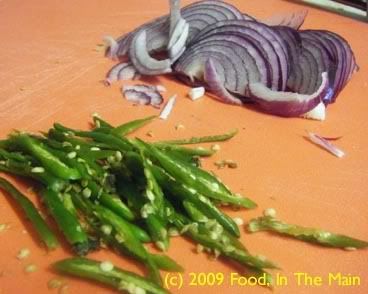
1" piece ginger, chopped or ground fine
3-4 tbsp fresh chopped coriander leaves
1/4 tsp turmeric powder
Method:
1. Wash the dal well in 3-4 changes of water.
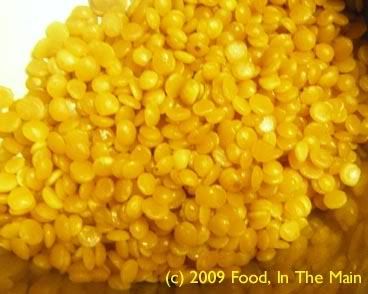
Pressure cook with the chopped mangoes and 1.5 cups water, for 3-4 whistles. Let the pressure reduce on its own. When the cooker can be opened, stir the cooked mangoes and dal (the mangoes might have disintegrated - this is ok, it's what we're after. But undisintegrated mangoes are fine too. Just mash them lightly.) Stir in a half-cup of water if the dal is too thick.
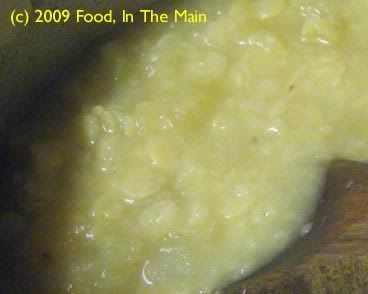
2. Heat the ghee in a medium size pan with deep sides. Add the cumin seeds and cardamom pod and let them sizzle for 30 seconds.
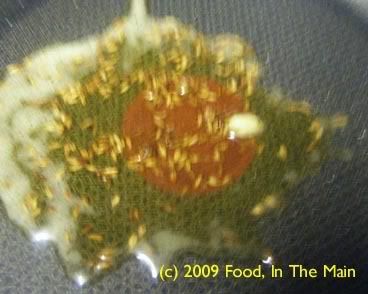
3. Then add the sliced onion, chillies and ginger.
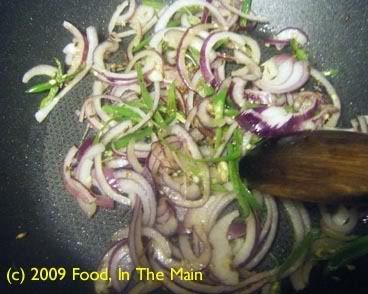
Stir-fry till the onions are lightly browned and the chillies make you cough (well, that's what happened!).
4. Now add the cumin powder, coriander powder and coriander leaves, and turmeric. Stir them in and fry for about a minute or so.

5. Add the cooked and mashed dal to the browned spiced onions in the pan,
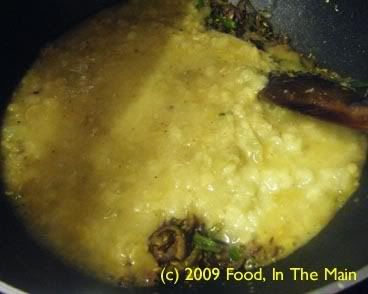
add salt to taste and stir well.

Bring to a boil and let simmer for 5 minutes, to let the flavours meld. Serve hot over steamed basmati rice, along with a dry vegetable curry of some sort.
I find I'm a bit worried about getting more and more radical with my bitter melon/bitter gourd/karela/pavakkai recipes, in that I’m using this vegetable in a less and less disguised fashion, as it were. I won't hide the fact that I'm feeling kind of - wait for it – meloncholy, the sort that leaves a.... yes, a somewhat bitter taste behind...
Time was when the only way I would even look at this knobbly-looking vegetable was if it was coated in seasoned gram flour and deep fried. And even then it wasn’t exactly welcome on my plate (or on my palate, heh. Tell me you love these punny asides, because I won’t accept a negative answer. What, did you think this was a democratic blog? Tut).
First I made my own karela chips. Then this. And this. And now, karela masala rice! Where oh where will it all end???
Be warned, readers, this recipe is only for those who love this vegetable. (Although, all evidence to the contrary, I still maintain that I’m not a member of the aforementioned karela-loving group. I mean yeah, I eat it. But would I reach for karela over, say, potatoes? Or green beans? Or plantains? No way, no how.) I used brown basmati instead of white rice, and cooked it with a bit of turmeric powder as per Suganya’s advice on her blog, Tasty Palettes – note that the idea for this recipe, and part of the method, is derived from her own post. I added peanuts for crunch (and some relief from the bitterness) and had a cool cucumber raita on the side, which is also, I think, essential to balance the taste.
Remember that rhetorical question I asked earlier? The one I didn’t answer, because it was rhetorical? (See paragraph 3.) Well, its status has just been downgraded from rhetorical to literal, because I’m answering it.
The karela radicality, my dear friends, does not end with this post. It cannot, because there is more to come, a recipe that is even more uncompromising when it comes to bringing the bitterness to the fore. And no clue, not one, about where that radicalisation will end, or when, or even how...
But for now, here’s the recipe to go with this post.
Recipe for: Bitter melon brown rice

Ingredients
1-1/2 cups brown basmati rice, soaked in water for 10 minutes
3 cups bitter melon/karela, sliced
3/4 tsp tamarind paste
1/2 tsp turmeric powder
1 tsp urad dal 1 tsp brown mustard seeds
2 tsp oil
a few fresh curry leaves
3-4 tbsp garlic masala powder (or to taste)
Salt to taste
1/4 cup roasted salted peanuts
chopped coriander leaves for garnish
Method
1. Cook the soaked brown basmati rice in plenty of water to which 1 tsp turmeric powder has been added.
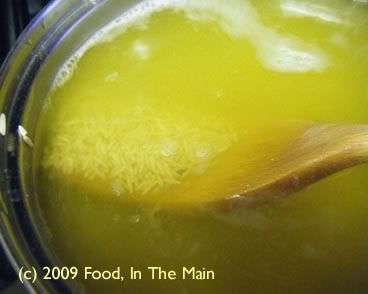
Drain rice and cool when cooked.
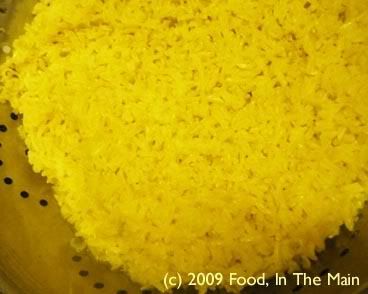
2. Dissolve the tamarind paste in 4 cups water and pour along with sliced karela in a saucepan. 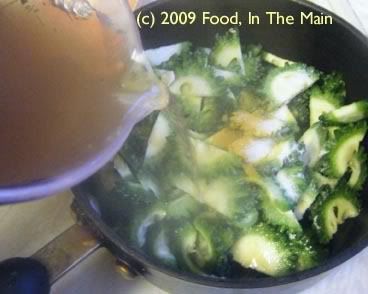
Cook the karela till done, but not mushy. Drain the cooked vegetable and reserve.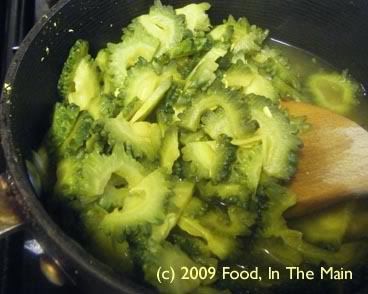
3. In a wide kadai or wok, heat the 2 tsp oil. Add the curry leaves, urad dal and mustard leaves. Cover till the mustard seeds pop, and the urad dal is golden brown. 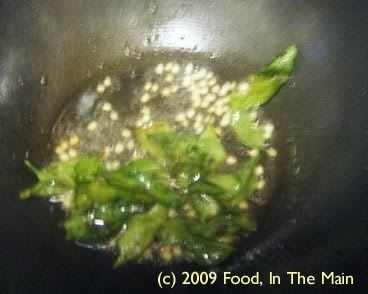
4. Add the cooked karela now and stir till the tempering is evenly distributed. 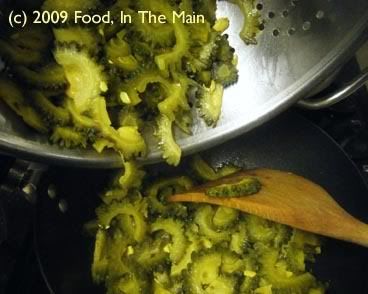
5. Sprinkle 2-3 tbsp of the garlic masala powder and stir it in. 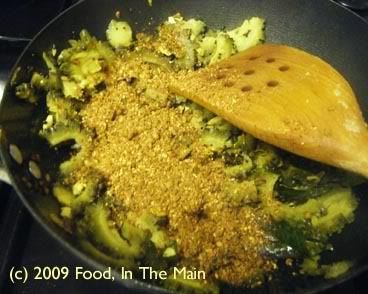
6. Roast the karela over medium heat in the pan, till it starts to crisp up. (You can add 2-3 tsp oil to speed up this process, if you like.)
7. Add the cooked rice now, add salt to taste, and mix carefully till the vegetable is evenly distributed. 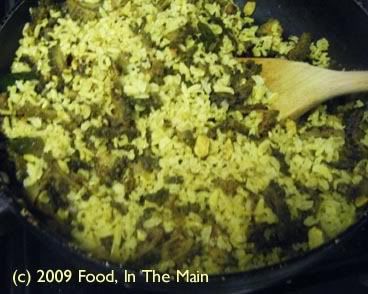
8. Stir-fry the rice till it's heated through, then add the peanuts and mix in. 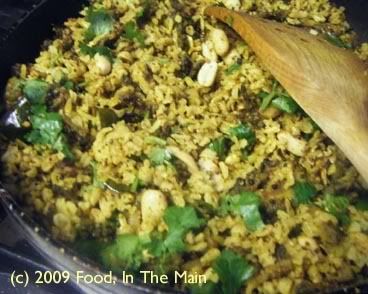 9. Sprinkle the chopped coriander over, and serve the rice hot with a cool cucumber raita and crisps or poppadums.
9. Sprinkle the chopped coriander over, and serve the rice hot with a cool cucumber raita and crisps or poppadums.





















